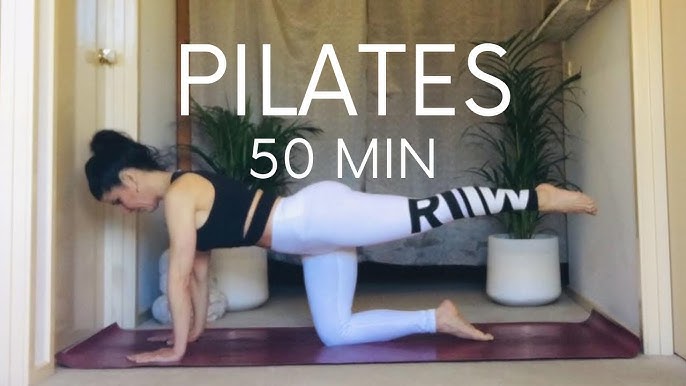
This Simple Pilates Routine Changes Posture Forever
Pilates Pila – Good posture is more than just a matter of appearance; it is essential for long-term health, overall comfort, and energy efficiency. Many people unknowingly develop poor posture habits due to prolonged sitting, heavy backpacks, or improper ergonomics at work. Over time, this can lead to back pain, neck tension, and reduced flexibility. A Pilates routine for posture offers a practical, effective way to address these issues while strengthening the core and promoting overall wellbeing.
Maintaining proper posture ensures that muscles, joints, and ligaments function optimally. Poor alignment can restrict breathing, impede digestion, and strain muscles unnecessarily. Pilates addresses posture by focusing on body awareness, core strength, and controlled movements. Unlike high-impact exercises, Pilates corrects postural imbalances without excessive strain or risk of injury.
Good posture improves energy efficiency, making everyday activities less tiring. It also supports mental health by promoting confidence and reducing tension that can contribute to stress.
The pelvic curl is foundational for strengthening the lower back and glutes. Begin lying on your back with knees bent, feet flat on the floor, and arms resting by your sides. Inhale deeply, then exhale as you slowly lift your hips, creating a straight line from shoulders to knees. Hold for a moment, then lower slowly. This movement engages the core while encouraging spinal articulation, which helps alleviate stiffness and promotes better alignment.
A variation of the pelvic curl, the shoulder bridge adds focus to the shoulders and upper spine. Lift the shoulders and hips while engaging the abdominal muscles. This exercise strengthens the back extensors and glutes while counteracting slouched shoulders common from prolonged computer use. It enhances spinal mobility and promotes upright posture.
The plank focuses on core stabilization, which is crucial for maintaining posture throughout daily activities. Begin in a push-up position with a straight line from head to heels. Engage the abdominal muscles and maintain alignment. Planks not only strengthen the core but also enhance shoulder stability and overall body balance, supporting upright posture in standing and sitting positions.
The roll-up promotes spinal flexibility and abdominal strength. Sit with legs extended straight and feet flexed. Slowly lower your torso to the floor while exhaling, then roll back up with controlled movement. This exercise encourages proper spinal alignment and strengthens the abdominal muscles, which are essential for supporting the back and maintaining upright posture.
Breathing is a central component of Pilates. Proper inhalation through the nose and slow exhalation through the mouth ensure effective muscle engagement and relaxation. Mindful breathing also increases body awareness, helping you recognize misalignments and adjust your posture throughout the day.
Mindfulness in movement ensures that exercises are performed correctly, maximizing benefits. As body awareness improves, you naturally adopt better posture in daily life, whether sitting, walking, or lifting objects.
Beyond posture correction, Pilates provides numerous health benefits. Flexibility improves, back pain decreases, and balance enhances. Engaging in regular Pilates practice reduces stress by combining concentration, breath control, and fluid movement.
Integrating Pilates with a balanced diet enhances results. Proper nutrition supports energy levels, aids muscle recovery, and complements the physical benefits of Pilates exercises. Together, mindful movement and healthy eating create a holistic approach to wellbeing.
Read More: The Secret Mobility Device That Feels Like Magic for Seniors
Consistency is the key to lasting improvement. Practicing ten to fifteen minutes daily can produce noticeable results in a few weeks. Begin with shorter sessions and gradually increase duration and intensity. Always warm up before exercises and cool down afterward to prevent strain.
Using guided videos or apps can help maintain proper technique and motivation. Set specific goals, such as improved core strength, flexibility, or reduced back discomfort, and track progress to stay engaged.
Pilates principles can extend beyond structured workouts. Engaging the core while walking, standing, or sitting reinforces proper posture. Simple adjustments, like keeping shoulders relaxed and aligning ears over shoulders, complement the exercises.
Incorporating micro-sessions during work breaks or morning routines can yield cumulative benefits. Even five-minute posture checks and stretches reinforce spinal alignment and muscle engagement.
With consistent practice, the body gradually feels lighter, taller, and more aligned. Shoulders relax, breathing deepens, and balance improves. Better posture positively impacts overall appearance and confidence, making daily activities more comfortable.
The combination of strength, flexibility, and awareness gained through Pilates ensures that postural corrections are sustainable. Over time, these changes become second nature, requiring less conscious effort to maintain an upright, healthy stance.
This simple Pilates routine has the potential to transform posture and enhance overall health when practiced regularly. Focusing on core strength, spinal flexibility, and mindful movement not only corrects alignment but also supports wellbeing, energy efficiency, and confidence. By committing to daily practice and integrating Pilates principles into everyday life, individuals can achieve lasting postural improvements and enjoy a healthier, more comfortable lifestyle.